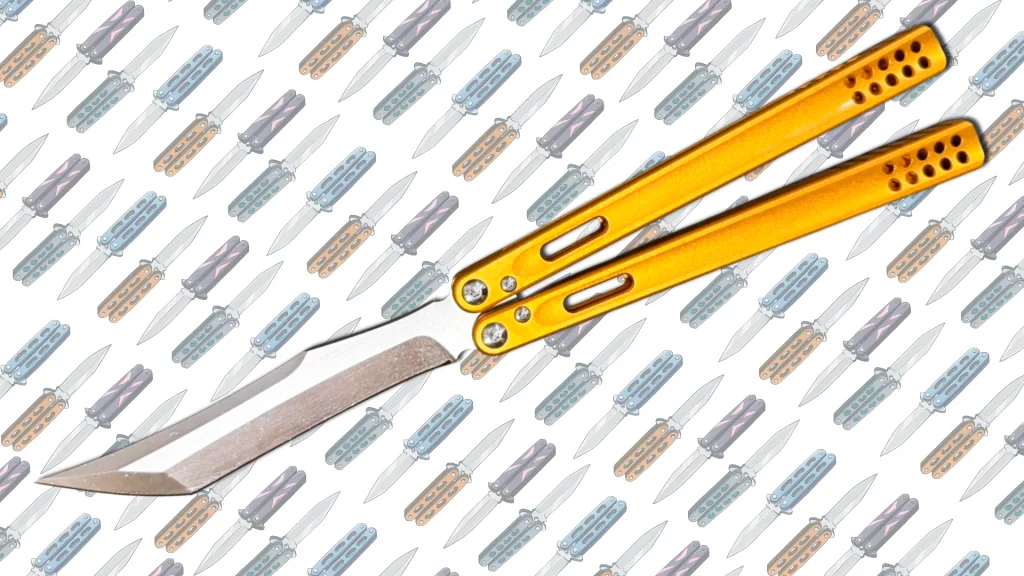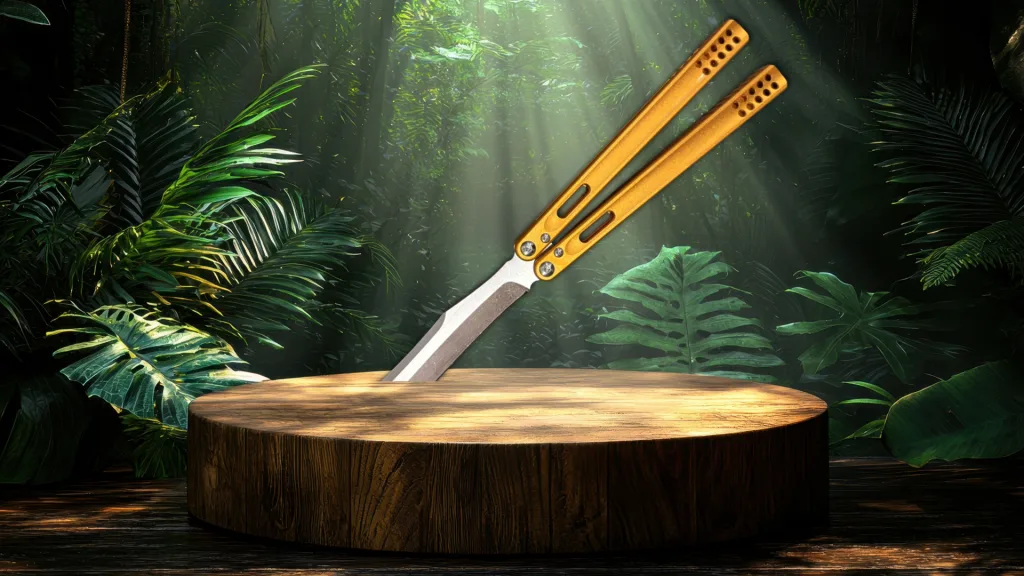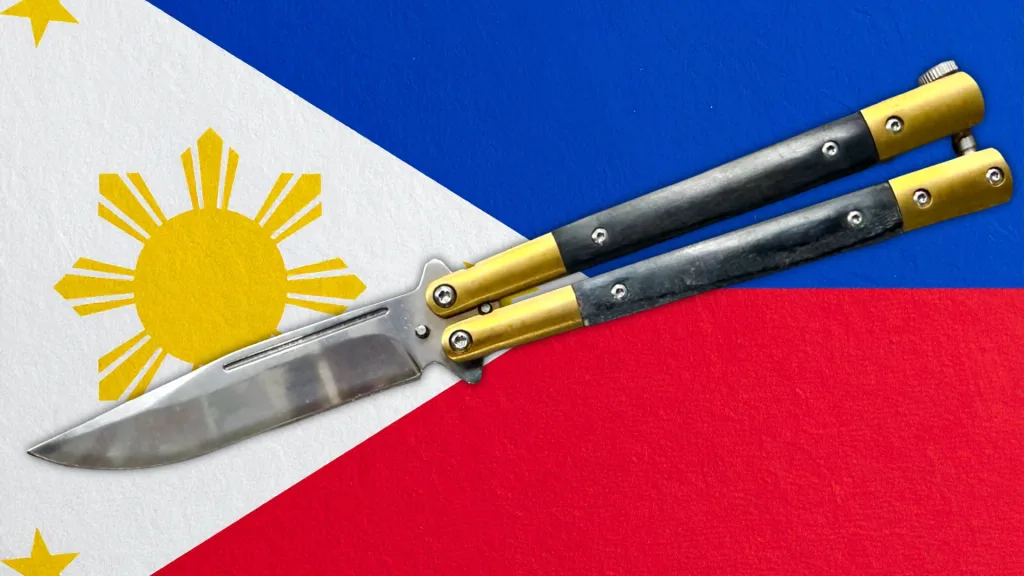
Once a humble utility blade in the Philippines, the balisong knife—often called a butterfly knife—has evolved into the centerpiece of a skill-based hobby embraced worldwide. Today, it stands at the intersection of cultural heritage, precision craftsmanship, and modern performance art.
From its roots in Batangas to its viral rise on TikTok, the balisong knife has captured the imagination of collectors, martial artists, and hobbyist flippers. Whether you’re seeking a safe trainer to learn tricks or a premium-grade flipper for competition, understanding its history, construction, and community can help you choose the perfect knife.
History of the Balisong Knife
The term balisong comes from the Tagalog phrase “baling sungay,” meaning “broken horn,” a nod to early knife handles carved from animal horn. Emerging in Batangas in the early 20th century, the balisong became an everyday carry tool for farmers, fishermen, and laborers.
Early models featured recycled steel blades and horn or hardwood handles. Lightweight and quick to open with one hand, they were invaluable for utility tasks and self-defense. Over time, owning and skillfully handling a balisong became a mark of maturity in certain Filipino communities.
Balisong Knife in Filipino Culture
In the Philippines, the balisong is more than a tool—it’s a symbol of ingenuity and craftsmanship. Hand-forged blades, hand-carved handles, and precise balancing showcased a maker’s skill. Many knives were passed down through generations, becoming family heirlooms.
Its presence in martial arts demonstrations reinforced its cultural significance. Skilled practitioners would execute lightning-fast openings, both as intimidation and as an exhibition of dexterity.

From Utility Tool to Flipping Art
By the mid-20th century, people began to explore the balisong’s potential for performance. What started as quick deployment for utility turned into “flipping”—spinning, tossing, and twirling the knife in intricate patterns.
Post–World War II, returning soldiers introduced the balisong to the West, where it became a staple in martial arts exhibitions and later appeared in action films of the 1980s. Books like Jeff Imada’s The Balisong Manual helped spread flipping techniques globally.
The Internet Era: Balisong Knife Goes Global
The late 1990s and early 2000s saw the rise of balisong forums such as BladeForums and BalisongXtreme, where enthusiasts shared techniques and build reviews. With the arrival of YouTube, flipping exploded in popularity—videos showcasing aerial tricks and latch drops inspired a new wave of flippers.
On Instagram and TikTok, short-form videos featuring slow-motion balisong tricks racked up millions of views. Hashtags like #balisong and #balisongflipping turned the once-niche hobby into a viral sensation.
Balisong Knife Competitions and Events
The online buzz evolved into real-world meet-ups. Local “bali-jams” allowed flippers to trade techniques and test each other’s knives. Events like Blade Show began hosting flipping competitions, culminating in the World Cup of Balisong Flipping in 2019.
Competitors are judged on speed, creativity, control, and flow. These events have helped shift the balisong’s image from weapon to skill toy—more akin to a yo-yo than a combat blade.
Choosing the Right Balisong Knife for Flipping
Performance flipping demands specific design features:
- Balance & Weight Distribution: Ideal flippers weigh around 4–5 ounces with neutral or slightly handle-biased balance for control.
- Materials: Titanium, aluminum, and G-10 fiberglass offer durability without excess weight. Avoid cheap zinc alloys and brittle plastics.
- Handle Construction: Channel handles are milled from one piece for durability, while sandwich handles are modular for easy maintenance.
- Pivot System: Bushings provide smooth, play-free action. Washers are common in budget models, while bearings are ultra-smooth but less durable.
Blade Styles for Balisong Knives
- Trainer Blades: Blunt, safe for learning.
- Tanto & Bowie: Offer distinct weight distribution for advanced tricks.
- Clip-Point: Versatile and balanced.
Beginners should always start with a trainer to avoid injuries while developing muscle memory.
Top Balisong Knife Brands
Benchmade
Iconic for models like the titanium-channel Benchmade 42, Benchmade set the standard for premium balisongs. Known for precision tolerances and innovative latches, their knives are a top choice for collectors and competitive flippers.
BRS (BladeRunnerS Systems)
Founded by flippers for flippers, BRS is behind legends like the Alpha Beast and Replicant—competition-grade knives engineered for flow, durability, and performance.
Squid Industries
Specializing in high-quality trainers like the Squiddy and Squidtrainer, Squid Industries made flipping accessible for beginners. Their live blade Krake Raken is also competition-proven.
Kershaw
The Kershaw Lucha brought high-end flipping performance to a mid-range price point. Smooth bearings and sturdy steel handles make it a popular entry-level choice.
HOM Design
Known for premium small-batch craftsmanship, HOM produces masterpieces like the Basilisk and Specter—blending aesthetic elegance with flipping precision.
MachineWise
An emerging favorite, MachineWise offers US-made balisongs with bushing pivots at accessible prices. Models like the Prysma are praised for competitive performance without the premium price tag.
Buying Tips for Beginners
- Start with a Trainer: Avoid injuries and bad habits.
- Prioritize Quality Materials: Aluminum or G-10 for handles; avoid low-grade alloys.
- Check Balance and Weight: Aim for a 4–5.5 oz range.
- Buy from Reputable Brands: Quality knives last longer, flip better, and hold resale value.
- Mind the Latch: Many flippers prefer latchless models to avoid interference during tricks.
Maintaining Your Balisong Knife
- Apply pivot lubricant regularly for smooth action.
- Use threadlocker on screws to prevent loosening.
- Clean out dust and debris from the pivots.
- Store in a dry place to avoid rust.
Flipping Tips for Beginners
- Grip Lightly: Over-gripping hinders flow.
- Learn the Basic Openings: Standard, reverse, and aerials.
- Practice Over Soft Surfaces: Protects your knife from damage during drops.
- Film Yourself: Reviewing footage helps spot bad habits.
Legal Considerations
Balisong knife laws vary by country and even by state or city. Some regions classify them as prohibited weapons, while others allow trainers but not live blades. Always check your local laws before carrying or purchasing.
FAQs About the Balisong Knife
Is the balisong knife illegal everywhere?
No. Laws vary widely. Some countries ban live blades but allow trainers; others impose no restrictions.
What is the best balisong knife for beginners?
The Squid Industries Squiddy or Squidtrainer are excellent starter options.
Can I learn flipping without a trainer?
It’s possible but risky. Trainers are safer and recommended.
Why do flippers remove the latch?
To prevent interference during tricks and avoid hand injuries.
What’s the difference between channel and sandwich handles?
Channel handles are milled from one piece, offering durability. Sandwich handles are modular and easier to maintain.
Do professional flippers use sharp blades?
Some do, but most prefer trainers or dulled blades for safety, especially during complex aerials.

Conclusion: The Balisong Knife Is More Than a Blade
From Batangas’ “broken horn” utility knives to global flipping competitions, the balisong knife has undergone a remarkable transformation. Today, it’s celebrated as an art form, a cultural icon, and a technical challenge for enthusiasts.
Owning a balisong is not just about having a knife—it’s about joining a worldwide community that values skill, craftsmanship, and creativity. Whether you’re perfecting your first opening or competing on stage, the journey is as thrilling as the flip itself.
Check out our other great blogs HERE
Check out the other great Balisongs HERE






